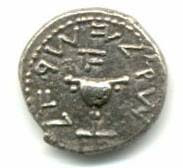This headline wins the week's bleeding obviousness award, and its only Tuesday. (We can expect tomorrow's headline ("Your taxes are due today" or alternatively "Long lines at Post Office as people file their taxes at the last minute") to posibly beat it out.)
The sub headline is also a master of the obvious: Study finds smallest vehicles perform poorly in head-on accidents
That we need such a study is a triumph of the scientific method to confirm that which we all should certainly know (but in this blighted age of scientific ignorance probably don't) - when big and heavy hits small and light, typically small and light will come out the worse for it.
David Shepardson / Detroit News Washington Bureau
The smallest cars on the road are at a high risk for damage and personal injury in frontal crashes with midsize sedans, a study released today finds.
And, the death rate in one- to three-year-old minicars -- vehicles most automakers are building or considering bringing to market -- was almost twice as high as the rate in very large cars in multiple vehicle crashes, according to the report from Insurance Institute for Highway Safety, an industry-funded group that prods automakers to improve the safety of vehicles.
The IIHS crashed a 2009 model Toyota Yaris into a larger Toyota Camry; a Smart Fortwo into a Mercedes C-Class; and a Honda Fit into a Honda Accord. Each vehicle was traveling at 40 mph. All three small cars performed poorly, while the larger vehicles were rated good or acceptable.
Frontal crashes are the most dangerous traffic accidents, causing about 15,000 out of roughly 40,000 U.S. traffic deaths annually.
"There are safety trade-offs with buying minicars," said Adrian Lund, IIHS president. He said larger, heavier hybrid vehicles may be a better choice, since they often get similar gas mileage but fare better in head-on collisions. "Though much safer than they were a few years ago, minicars as a group do a comparatively poor job of protecting people in crashes."
This is called a trade-off - impressive fule economy in return for higher risk of injury in accidents, pushed by governmental CAFE standards and mandates.
Automakers are betting on smaller cars in the face of last year's $4 a gallon gasoline prices and higher government fuel-efficiency standards, which are pushing automakers to bring lighter, smaller vehicles to market. Federal fuel rules call for a 35 percent fleetwide average increase in fuel efficiency by 2020. To that end, Ford Motor Co. is bringing the Fiesta to the United States and General Motors Corp. is introducing the Chevrolet Cruze next year. Chrysler LLC is trying to finalize a deal with Italian automaker Fiat SpA, which would provide it with small vehicles. Volkswagen AG is considering bringing its minicar to the U.S. market as well.
Small cars are good for decent weather, intra-urban driving. On the highways or in Michigan snow, not so much.
The bootrom line: if you've got the cash for a fuel efficient car for in-city trips and enoguh for another for a vehicle that can actually haul your kids around, handle snow and offer some decent crash safety it might not be a bad idea to have a Smart or such as a second car. Solely having a Smart or similar unless you're an unattached, childless hipster that doesn't need to haul much around and doesn't need to travel much outside of the city streets probably won't make a lot of sense or safety.
Mind you, Obama may just change the nature of things by legislative Fiat and force all cars from now on to be built small.
Update: Instapundit has a link to Autoblog that refers to the same story and even has links to video of the crash tests. Some of the comments on Autoblog are truly priceless.

No comments:
Post a Comment